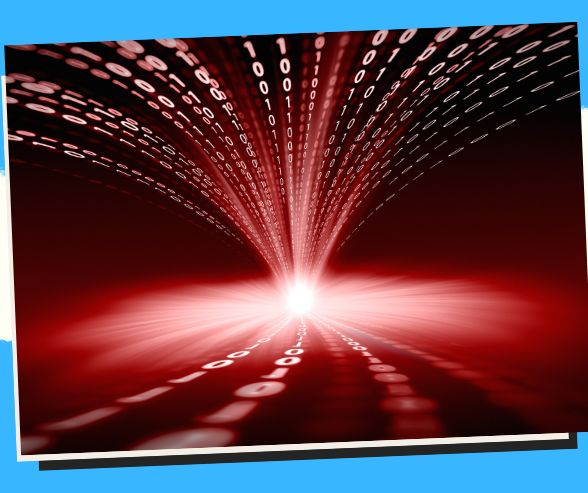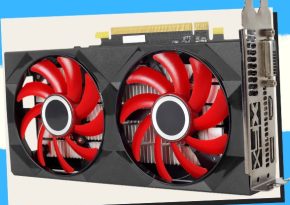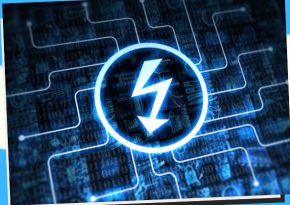
Powering Tomorrow: Navigating the Hurdles in Designing Efficient Processors 

Discover the efforts to bridge the energy gap in processor design, balancing struggles with triumphs.
Navigating the Labyrinth: Challenges in Designing Power-Efficient Processors 


In the ever-evolving landscape of technology, the demand for faster and more efficient processors is insatiable. Power-efficient processors have become the linchpin of modern computing, Whether for mobile devices, data centers, or IoT (Internet of Things) devices. However, designing processors that strike the delicate balance between performance and energy efficiency is no easy feat. In this article, we’ll journey through the intricacies of power-efficient processor design, exploring the challenges that engineers and designers face and the innovative solutions they employ.
The Vital Role of Power Efficiency 

Before diving into the challenges, let’s establish why power efficiency is paramount in the world of processors.
1. Prolonged Battery Life 

In mobile devices, power efficiency is synonymous with longer battery life. Users expect their smartphones and tablets to last a full day on a single charge.
2. Green Computing 

Data centers, the backbone of the digital age, consume massive amounts of energy. Energy-efficient processors contribute to reducing the carbon footprint of data centers.
3. Heat Management 

Power-efficient processors generate less heat, making them easier to cool. This is crucial for mobile devices and data centers, where overheating can lead to performance throttling and hardware failures.
4. IoT Devices 

Batteries often power IoT devices and may operate in remote or inaccessible locations. Power-efficient processors are essential for their longevity and reliability.
The Multifaceted Challenges 

Designing power-efficient processors is a complex puzzle with numerous interlocking pieces. Here are the key challenges:
1. Moore’s Law and Dennard Scaling 

Moore’s Law, which posits that the number of transistors on a microchip doubles approximately every two years, has slowed down. As transistor sizes shrink, they become less energy-efficient. Dennard Scaling, which is used to ensure smaller transistors consume less power, has also faltered.
2. Dark Silicon 

Dark silicon refers to portions of a chip that must remain inactive at any given time to avoid overheating. As transistor counts increase, the amount of dark silicon grows, limiting the overall computational power of the processor.
3. Power-Hungry Applications 

Modern applications, especially those involving artificial intelligence (AI) and machine learning (ML), are incredibly power-hungry. Meeting their demands for performance while maintaining efficiency is challenging.
4. Clock Frequency Limits 

Increasing clock frequencies, which boost processor performance, now leads to exponentially higher power consumption and heat generation. This has pushed processors towards parallelism.
5. Parallelism and Scalability ↔️
Parallelism, or the ability to perform multiple tasks simultaneously, is a key solution. However, designing processors that efficiently utilize parallelism and scale across multiple cores is intricate.
6. Memory Hierarchy 

Managing the memory hierarchy within a processor is critical for minimizing data access times and power consumption. This involves trade-offs between various types of memory, such as caches and RAM.
7. Energy-Efficient Architectures 

Architectural choices, such as whether to use RISC (Reduced Instruction Set Computer) or CISC (Complex Instruction Set Computer) architectures, play a significant role in energy efficiency.
8. Dynamic Voltage and Frequency Scaling (DVFS) 

DVFS is a technique that adjusts the voltage and frequency of a processor dynamically to match the workload. Coordinating DVFS effectively requires complex algorithms.
9. Dark Silicon Utilization 

Efficiently using dark silicon areas by dedicating them to specialized, low-power functions, like accelerators for AI, is a design challenge that can boost overall efficiency.
10. Software Optimization 

Software plays a pivotal role in power efficiency. Optimizing compilers and programming models can extract more performance per watt.
Ingenious Solutions and Innovations 

While the challenges are daunting, the world of power-efficient processor design is also marked by ingenious solutions and innovations. Let’s explore some of these:
1. Heterogeneous Architectures 

Heterogeneous computing architectures, which combine various types of cores (e.g., CPUs and GPUs), allow processors to leverage specialized units for specific tasks, reducing overall power consumption.
2. FinFET Transistors 

FinFET (fin field-effect transistor) technology is a 3D transistor design that improves energy efficiency by better-controlling leakage current.
3. Low-Power States 

Modern processors have multiple low-power states, allowing them to scale down their power consumption when idle or under light workloads.
4. Advanced Cooling Solutions 

Innovative cooling solutions, such as liquid and phase-change materials, help dissipate heat more efficiently.
5. AI for Energy Efficiency 

Artificial intelligence and machine learning are used to optimize power consumption dynamically, adapting to workloads in real time.
6. Quantum Tunneling Transistors 

Research into quantum tunneling transistors holds the promise of even smaller and more energy-efficient transistors.
7. Neuromorphic Computing 

Inspired by the human brain, neuromorphic computing utilizes spiking neural networks and event-based processing for efficient pattern recognition.
8. Energy-Efficient Algorithms 

Developers are increasingly focusing on creating inherently energy-efficient algorithms, reducing applications’ computational demands.
9. Energy Harvesting 

Exploring ways to harvest ambient energy, such as solar or kinetic energy, to power processors in certain applications.
The Future of Power-Efficient Processors 

As we look ahead, the challenges of power-efficient processor design will persist, but so will the determination to overcome them. The future holds exciting prospects:
1. Beyond Silicon 

Researchers are exploring materials beyond traditional silicon that could offer better energy efficiency, such as carbon nanotubes and 2D materials like graphene.
2. Quantum Computing 

Quantum computing, with its potential for exponential parallelism, offers a radically different approach to computation that could redefine the landscape of power efficiency.
3. Neuromorphic Chips 

Neuromorphic chips that mimic the brain’s neural architecture could revolutionize power-efficient processing for AI and cognitive tasks.
4. Advanced Cooling 

Innovations in cooling technologies, including more efficient heat sinks and advanced coolants, will continue to play a pivotal role in power-efficient design.
5. AI-Driven Optimization 

Artificial intelligence will continue to be harnessed for real-time optimization of power consumption, making processors adapt dynamically to varying workloads.
Conclusion: Navigating the Labyrinth 

Designing power-efficient processors is akin to navigating a labyrinth, with each challenge representing a twist and turn. However, it’s a journey of innovation, creativity, and the unwavering pursuit of technological excellence.
The processors of tomorrow will be more powerful and energy-efficient, enabling a future where technology seamlessly integrates with our lives while preserving our planet’s resources. As we continue to unravel the complexities of power-efficient design, we embark on a path toward a brighter and more sustainable digital future.
Related Queries









Save/Share this story with QR CODE
Disclaimer
This article is for informational purposes only and does not constitute endorsement of any specific technologies or methodologies and financial advice or endorsement of any specific products or services.
 Need to get in touch?
Need to get in touch?

We appreciate your reading. 
1.) 

Your DONATION will be used to fund and maintain NEXTGENDAY.com
Subscribers in the Philippines can make donations to mobile number 0917 906 3081, thru GCash.
3.) 
4.) 
AFFILIATE PARTNERS

World Class Nutritional Supplements - Buy Highest Quality Products, Purest Most Healthy Ingredients, Direct to your Door! Up to 90% OFF.
Join LiveGood Today - A company created to satisfy the world's most demanding leaders and entrepreneurs, with the best compensation plan today.












